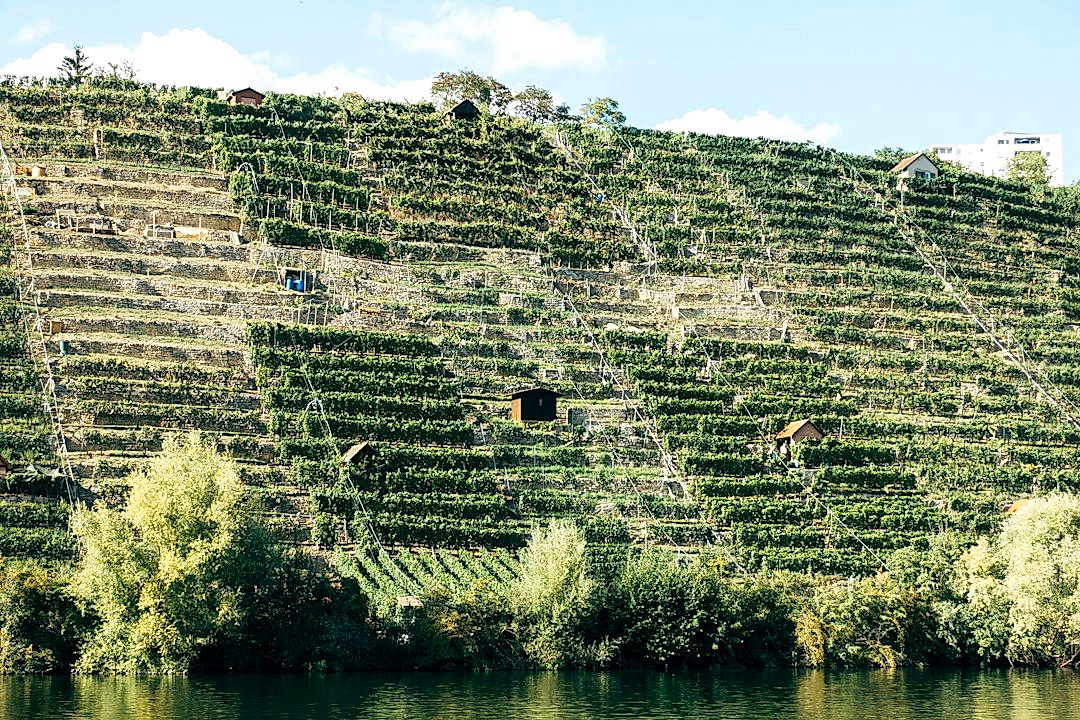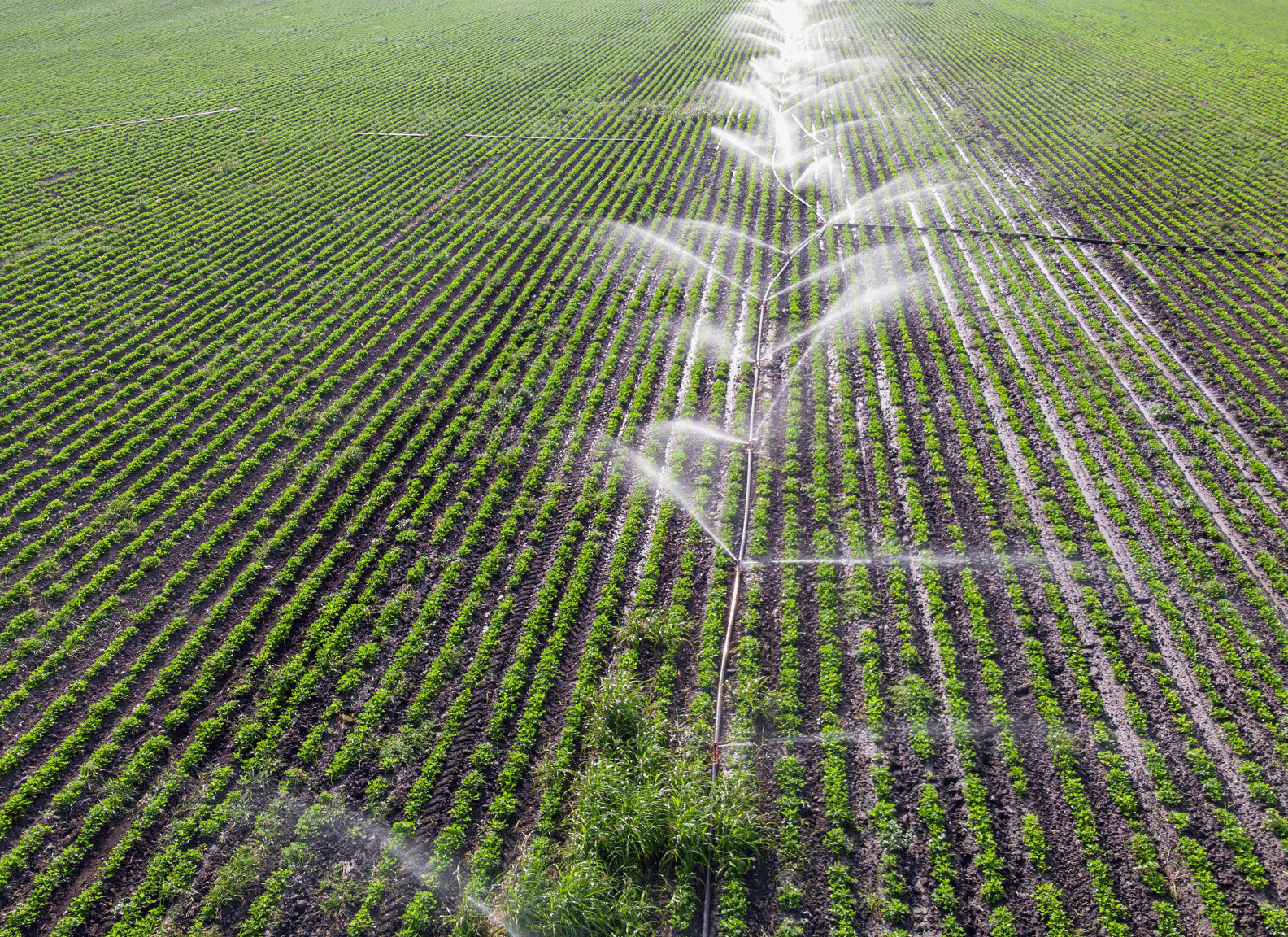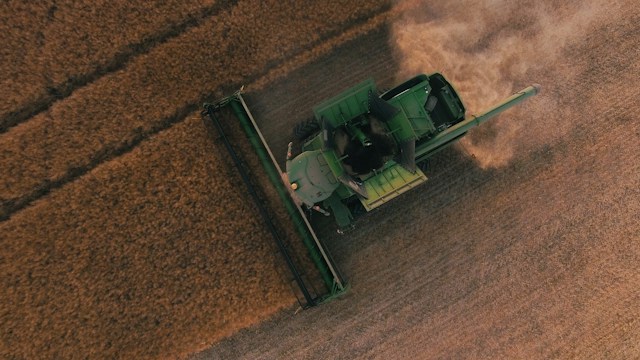Urban produce growth has traditionally depended heavily on the outlying rural farms, but recent advancements are reshaping this association completely.
Vertical farming has emerged as a revolutionary solution to food production challenges faced by bustling metropolises worldwide.
It is a new agricultural method that addresses the crucial issues of space and resources.
Innovative technologies are transforming unused spaces into thriving hubs of green growth.
The relevance of these advances is paramount at a time when urbanization continues to expand limitlessly.
This blog will delve into these advancements, illuminating how vertical farming is redefining old narratives and paving the way for sustainable urban cultivation practices.
Contents
- Vertical Farming Advances Redefining Urban Produce
- 1. Hydroponics and Aeroponics replacing traditional soil farming
- 2. LED Lights enhancing plant growth rates.
- 3. AI-controlled climatic conditions for optimized growth.
- 4. Vertical stacking to maximize spatial efficiency.
- 5. Remote, real-time monitoring of crops
- 6. Integration of Automated Harvesting Technologies
- 7. Advanced Fertigation Systems Minimizing Water Use
- 8. Use of Renewable Energy Sources
- 9. Biosecurity measures preventing pest infestations.
- 10. Indoor pollination techniques for year-round farming
- The Bottom Line
Vertical Farming Advances Redefining Urban Produce
1. Hydroponics and Aeroponics replacing traditional soil farming
One of the most advanced and revolutionizing facets of vertical farming lies within hydroponics and aeroponics replacing traditional soil farming methods.
Both hydroponics and aeroponics are soil-less farming techniques providing an agile and dynamic medium for cultivating various types of crops.
Hydroponics, in its literal sense, means growing plants in water.
The water in hydroponics systems is often enriched with mineral nutrient solutions, eliminating the need for soil and providing the crops with the essential nutrients directly and conveniently.
On the other hand, aeroponics allows the growth of crops in air or mist environments.
Just like hydroponics, it provides plants with the necessary nutrients, but without involving water as the primary growing medium.
In fact, aeroponics is considered to be the most advanced and efficient way of conducting soil-less farming, delving even further into parameters of minimal water and space usage.
When compared to traditional soil farming, both hydroponics and aeroponics offer a plethora of advantages.
For starters, they result in substantially higher yield per unit area due to their ability to stack vertically.
Such a vertical stacking leads to greater output while significantly reducing the physical footprint of the farming operation.
Moreover, the elimination of soil takes away the risk of soil-borne diseases, leading to healthier, organic, and cleaner produce.
Besides, both hydroponics and aeroponics are famous for their efficient use of water, utilizing around 90% less water than traditional farming.
This makes them inherently more sustainable and eco-friendly, aligning perfectly with the global effort towards conserving and recycling water resources.
In line with the topic of ‘Vertical Farming Advances Redefining Urban Produce’, hydroponics and aeroponics are indeed playing a pivotal part in redefining how urban farming is done.
More importantly, the incorporation of these techniques into vertical farming is facilitating the growth of fresh, organic produce right in the heart of densely populated urban areas, bypassing the need for sprawling farmlands and significantly reduction in farming carbon footprint.
Indeed, a world where we grow lettuce on rooftops and strawberries in basements is no longer a figment of our imagination, thanks to the introduction of hydroponic and aeroponic techniques in vertical farming.
2. LED Lights enhancing plant growth rates.
The use of LED lights in farming has been a major stepping stone in the much vaunted transition to vertical farming, significantly transforming the concept of urban agriculture.
Through Photosynthetically Active Radiation (PAR), LED lights optimize plant growth rates by providing energy which plants need for photosynthesis.
This is in stark contrast to traditional farming where sunlight, and subsequently photosynthesis, are hugely influenced by geographical location and climatic changes.
LED lights have a specific spectrum that can be adjusted based on the plant’s growth phase which helps in suitable and health plant development.
High quality LED lights allow vertical farmers to tailor the light spectrum to the needs of specific plant species and growth stages, thereby maximizing yields.
The advent of LED lights in vertical farming has seen agricultural productivity per unit of land grow exponentially.
More specifically, LEDs contribute to significantly higher crop yields when compared to other lighting technologies, making them indispensable in the pursuit of sustainable urban farming.
A crucial advantage of using LEDs in vertical farms is that they reduce energy consumption and produce less heat compared to conventional lighting solutions.
Reduced heat from LED lights means that crops can grow closer to the light source, allowing for the stacking of farming shelves, a core aspect of vertical farming.
This is an excellent strategy for optimizing space, crucial in urban environments where land is at a premium.
Furthermore, the adjustable intensity of LED lights allows for the creation of an ideal photoperiod necessary for faster crop turns.
In vertical farming, integrated LED lighting strategies amplify growth rate and enhance taste, texture and color of the crops.
Light-emitting Diodes (LEDs) technologically represent a more sustainable and efficient method for plant growth and development.
The horticultural industry’s swift adoption of LED technology is testament to the many benefits and promises it holds for the future.
Nevertheless, as much as LED technology has been groundbreaking, further research and experimentation are necessary to provide more insights into its maximum potential for vertical farming.
All in all, the utilization of LED technology in vertical farming is an astute example of technology fostering sustainability in modern agriculture.
3. AI-controlled climatic conditions for optimized growth.
In the realm of vertical farming, AI-controlled climatic conditions are becoming an increasingly popular tool for optimizing crop growth.
These systems, developed by leading agricultural technology companies, maintain precise, optimal conditions within vertical farms to ensure maximum plant growth and productivity.
The technological intervention allows farmers to control temperatures, humidity levels, light exposure, and nutrient availability, opposing the unpredictability of traditional outdoor farming.
AI-based climate control systems can adjust parameters in real-time based on in-depth data analysis, making swift changes to the indoor environment when needed to support plant health.
Correspondingly, AI-controlled climatic conditions maximize plant health, yield, and nutritional quality by counteracting the variability that outdoor crop production faces due to weather conditions and seasonal changes.
The AI systems integrate a network of sensors throughout the vertical farm that continuously monitor environmental conditions and provide data for system adjustments.
These sensors relay information on factors such as temperature, humidity, light levels, and nutrient concentrations back to the central AI program for analysis.
The AI software can then make informed decisions about how to adjust environmental conditions within the vertical farm for optimized crop growth.
The use of AI in managing climatic conditions can also result in significant energy and resource conservation, as these systems ensure that resources are used only when necessary for plant health.
As such, AI-controlled climatic conditions significantly contribute to the sustainability of vertical farming.
Through AI, vertical farming becomes not just a means to produce food, but also a way to do it efficiently, sustainably, and with a high level of precision that promotes plant health and productivity.
AI systems, with their ability to consistently maintain optimal growth conditions, give vertical farms a competitive edge over traditional farming methods.
They allow for the consistent production of high-quality crops year-round, regardless of outdoor weather conditions.
This is a remarkable evolution in farming technology and is poised to redefine urban produce in the ongoing journey towards food system sustainability.
Therefore, the use of AI in controlling climatic conditions in vertical farms is a significant advance in urban agriculture, promising a brighter future for food production in urban settings.
4. Vertical stacking to maximize spatial efficiency.
Vertical farming, by its nature, presents an opportunity to greatly increase crop yield per square foot compared to traditional farming methods.
This is achieved by utilizing vertical stacking, taking farming into the third dimension and offering a strategic means of maximizing spatial efficiency.
In essence, crops are grown in stacked layers, often in tailored shelves or trays, in contrast to conventional farming which is spread across vast horizontal fields.
The fundamentals of vertical farming revolve around using the vertical space effectively, enabling a greater frequency of crops to be grown in the same footprint.
This transformative agriculture technique enables urban areas, where space is often limited, to potentially become a hub for prosperous agriculture.
Many vertical farms make use of repurposed buildings, converting them into high-production, urban farms.
This not only optimizes the use of vertical space but also contributes to urban regrowth by reutilizing abandoned or unused buildings.
Further innovations in vertical farming include the use of racks with a conveyor system, which rotates the crops, ensuring they get an equal distribution of light and nutrients.
The benefit of this approach is it reduces the constraints of relying on natural sunlight and allows total control over each crop’s growing conditions.
Furthermore, the tight stacking of these crops, combined with effective climate control systems, optimizes yield by creating an ideal growing environment.
While the initial investment might be high, the potential returns from the increased yield and high turnover rates make this a promising advancement in urban farming.
Moreover, vertical farming has a substantially smaller carbon footprint as it reduces the need for transportation from rural areas, contributing to the fight against climate change.
The ability to harvest crops year-round, irrespective of outdoor weather conditions, also ensures consistent fresh produce for cities.
Thus, vertical stacking is not just about space maximization; it also improves crop consistency, reduces resource usage, and helps in greening urban spaces.
Ensuring food security and sustainability in growing urban populations, vertical farming powered by vertical stacking appears to be the future of urban agriculture.
5. Remote, real-time monitoring of crops
In the ambit of Vertical Farming Advances, the introduction of remote, real-time monitoring of crops has upended traditional farming methods.
This innovation allows farmers to supervise the health of their crops from anywhere around the globe, thereby enhancing the agroecosystem’s efficiency and productivity.
This remote monitoring works via the installation of advanced sensors in the vertical farm structure.
These sensors accumulate and analyze a range of critical agricultural data types such as temperature, humidity, light intensity, pH levels, and nutrient content in real-time.
Through leveraging cutting-edge technologies including IoT, machine learning, and AI, the acquired data is rendered accessible to farmers in a comprehensible mode.
The successful integration of this monitoring system serves as a critical factor in the viability of vertical farming, allowing real-time optimization of plant growth conditions and faster reaction to possible issues.
By keeping pace with the real time changes enabling them to quickly adjust the farm’s environment for optimal plant health and yield.
Moreover, these smart sensors also help in early detection of diseases and pest attacks, providing farmers with a proactive method of tackling potential threats to crop health.
When a poor plant health marker is identified, the system sends alerts, so farmers can instantaneously act and mitigate the effects on their crops.
One of the advantages of remote monitoring is the increased precision and accuracy in predicting crop yields due to the data’s consistency and reliability.
Another benefit is the considerable reduction in labor costs, as one doesn’t need to be physically present to oversee the crops, and the system operates around the clock, reducing human error.
Furthermore, long-term monitoring of the data collected can reveal patterns and unveil deep insights about the plant’s response to different parameters and conditions.
These insights prove helpful in outlining the most effective strategies for increasing crop productivity.
All these aspects together enhance the sustainability and efficiency of vertical farming practices.
Thus, remote, real-time monitoring of crops turns out to be a crucial factor in making vertical farming a game-changer in urban produce.
6. Integration of Automated Harvesting Technologies
The integration of automated harvesting technologies is a significant advancement in the realm of vertical farming.
Enhanced by AI and machine learning algorithms, these technologies are able to identify when crops are ready for harvest, subsequently performing the task autonomously.
This not only reduces labor costs but also ensures a consistent and efficient harvesting process.
Automation is crucial in vertical farming, given the restricted spaces and precision required in the harvesting process.
Automated harvesting holds potential in reducing crop damage, subsequently improving the quality of the produce.
The technology can be specifically calibrated for the unique needs of different crops, ensuring their optimal yield.
Robotic arms fitted with AI vision systems precisely pick and sort produce, ensuring delicate crops are not damaged in the process.
These harvesting technologies use a combination of cameras, sensors, and AI algorithms to determine the ripeness of various fruits, factoring in color, size, and shape.
In addition to efficiency, these technologies also minimize waste, offering solutions to the industry’s significant food waste issue.
During a 24-hour cycle, hundreds of pounds of crops can be efficiently harvested on a single vertical farming system, showcasing the potential of automation in large-scale vertical farming.
The use of such automated systems lowers the risk of human error, as well as reducing contamination risks, ensuring farm produce is safe for consumption.
Furthermore, labor costs can be substantially reduced, with automated harvesting technologies capable of working around the clock.
This not only increases productivity but allows the resources that would ordinarily be spent on human labor to be reinvested back into the farming operation.
Ultimately, integrating automated harvesting technologies into vertical farming systems offers an innovative solution to the challenges of urban farming.
As these technologies continue to advance, vertical farming operations look set to further redefine the urban produce landscape.
7. Advanced Fertigation Systems Minimizing Water Use
The concept of advanced fertigation systems involves the precise application of water and fertilizers to plants, thus highly benefiting vertical farming by minimizing water use.
It’s a technologically advanced solution in the realm of vertical farming, ensuring both water conservation and crop nourishment.
In contrast to traditional irrigation methods, fertigation systems allow for the exact measurement of nutrients and water needed, thereby reducing waste.
This highly efficient model of water use is not only economically beneficial but also is an environmental win for sustainable farming.
Modern fertigation systems employ sensors and automated controls to monitor soil moisture and nutrient levels, ensuring the optimal conditions for plant growth.
The ability to customize the amount, timing, and ratio of nutrients delivered to each plant is a significant advantage of these systems.
This customization level leads to improved plant health and productivity, being a perfect fit for vertical farms where space is a premium resource.
By delivering nutrients directly into the root zone of each plant, advanced fertigation systems allow for more efficient absorption and reduce nutrient leaching.
This localized delivery method ensures that every drop of water is put to use, which is a substantial improvement over traditional farming methods.
Moreover, these advanced systems provide the possibility to recirculate any unused water and nutrients back into the system, further reducing waste and increasing efficiency.
It’s important to highlight that these advanced fertigation techniques lead to a decreased need for natural resources, thereby supporting the essence of sustainable agriculture.
In addition, these systems often entail fewer labor costs, since they are automated and can be monitored from a distance, complementing the remote monitoring facet of vertical farming.
Advanced fertigation systems contribute significantly to the high yields obtained in vertical farming operations, often surpassing those of traditional farming practices.
Long-term, these systems help slow down soil degradation and provide alternatives to areas suffering from drought or poor soil conditions.
Ultimately, optimizing water usage through advanced fertigation systems is a profound step towards achieving food security in urban areas through vertical farming.
8. Use of Renewable Energy Sources
The vertical farming industry is prospering from novel technologies and advanced methodologies that are aimed to redefine urban agriculture by reducing its reliance on traditional energy sources.
This is achieved through the implementation of renewable energy sources which is crucial in making vertical farming more sustainable and environmentally friendly.
The array of renewable energy options such as Solar, wind, and geothermal energy has extensive potential in powering urban indoor farms.
The integration of renewable energy sources into vertical farming not only reduces the carbon footprint but also ensures consistent, uninterrupted energy supply for round-the-clock growing systems.
Despite the high upfront costs of these renewable energy installations, they offer long-term cost savings by reducing recurring energy bills.
For example, solar panels can be installed on the roof or sides of the vertical farm building, harnessing abundant sunlight to create electricity.
These solar panels could also power LED lights used for indoor plant growth, subsequently optimizing the energy consumption of the whole facility.
Similarly, wind turbines can be installed peripheral to the buildings, and their energy can be converted to electricity.
Farms located in colder regions can take advantage of geothermal energy wherein heat from under the earth is utilized to control indoor temperatures in the farming units.
Standalone energy storage systems, such as batteries and fuel cells, can store excess energy produced during peak production times to be used during periods of low production or high demand.
Furthermore, applying smart grid technology can significantly increase energy efficiency by balancing demand and supply.
These renewable resources, therefore, fulfill the energy requirements of the sophisticated systems in vertical farming like AI climate control, hydroponic systems, and LED lighting.
The progression in the renewable energy sector is providing an optimistic outlook for the vertical farming industry, which is continually advancing towards a complete transformation of urban farming.
Indeed, the use of renewable energy is presenting environmental, social, and economical benefits that align perfectly with urban farming’s fundamental ethos.
Although the initial setup cost does become a deterrent for the widespread adoption of renewable energy in vertical farms, the fast-paced advancements in the field promise affordable solutions in the future.
9. Biosecurity measures preventing pest infestations.
In the realm of vertical farming, implementing biosecurity measures proves essential in safeguarding crop health while optimizing yields.
Tight control over environmental factors within vertical farming systems significantly reduces the likelihood of pest infestations.
Vertical farms typically maintain closed off indoor environments, which inherently limit exposure to disease-causing agents and pests found in traditional farming settings.
Improved biosecurity measures in vertical farming systems, not only prevent crop losses to pests, but also eliminate the need for large amounts of pesticides typically used in traditional farming.
Employing sterilization techniques on farm tools and handling equipment further helps keep the vertical farming environment clean and pest-free.
To ensure effective biosecurity, regular monitoring and swift response to pest and disease issues are critical.
Experts typically recommend routine checks and the use of integrated pest management approaches, where pests are monitored regularly and targeted with a combination of biological, cultural, and chemical methods when necessary.
Sticky traps and other non-chemical methods, for instance, can be easily applied inside these farms to monitor and control certain pests.
Advancements in technology now also complement biosecurity measures, with the introduction of sophisticated sensors and predictive modeling tools.
Such technologies can detect early signs of pest activity, allowing for early intervention and prevention of larger infestations.
In addition to pest control, biosecurity measures also include methods for disease control, such as the regulation of humidity levels to prevent the growth of harmful fungus.
Vertical farms can also harness the power of beneficial insects and microbes to maintain crop health and keep harmful pests at bay.
Finally, the integration of blockchain technology in recording and monitoring biosecurity protocols is showing potential in ensuring transparency and traceability across the vertical farming supply chain.
Through meticulous planning and strict implementation of biosecurity measures, vertical farms are redefining the agricultural landscape, offering a sustainable and resilient alternative to traditional farming methods.
This approach is truly revolutionizing urban produce, minimizing the impact of pests and diseases on crop health and yield, thereby increasing food security in urban spaces around the world.
10. Indoor pollination techniques for year-round farming
Indoor farming, specifically vertical farming, has revolutionized the way we conceive traditional farming, largely due to the implementation of innovative technologies, including different indoor pollination techniques.
Indoor pollination not only guarantees a greater yield but also ensures year-round cultivation and production, regardless of the changing seasons and weather conditions.
This is made possible by simulating natural pollination methods, using fine-tuned techniques in controlled environments to foster the pollination process.
There are numerous techniques used for indoor pollination, but one of the most prevalent techniques is the use of pollination machines and robots.
In recent years, there has been a notable rise in the development and use of small robotic insects or drones designed to have similar characteristics to bees, known as ‘robo-bees’.
These robo-bees are programmed to act as artificial pollinators, flying around the farm navigating through a sequence of flowers to successfully accomplish the pollination process, thus complementing or substitifying natural pollinators.
Another technique, especially relevant to certain types of crops such as tomatoes, is vibrating pollination.
This technique involves a small vibrating device that triggers the pollen to shake loose and fall onto the stigma, stimulating the pollination process.
Besides, some farmers use the ‘Hand-Pollination’ technique, it involves taking a small brush and physically transferring pollen from the stamen of one flower to the pistil of another.
Despite being a labor-intensive process, this method enables greater control over the pollination process, which can increase the success rates of the pollination.
Furthermore, these indoor pollinating techniques play a crucial role in achieving food security and sustainability in urban areas.
By ensuring year-round farming, indoor pollination strategies greatly optimize the use of vertical farm spaces, boosting crop production in urban areas with limited farmland, and catering to the increasing food demand.
Integrating these advanced pollination methods and optimizing them using technology and machine learning can significantly enhance crop yield, quality, and productivity in vertical farms.
However, implementing these indoor pollination techniques, while offers myriad benefits, requires a profound understanding of the plant biology and adopting appropriate strategies for different crops.
With the advancement in farming technologies and deeper insights into plant genetics, we can look forward to more innovative and efficient indoor pollination techniques in the future.
The Bottom Line
The advanced technologies being integrated into modern indoor farming practices offer a promising alternative to traditional agriculture.
LED lighting, AI-controlled environments, and automated harvesting provide a superior and tailored environment for crop growth, while advanced fertigation systems, vertical stacking, and renewable energy use promote sustainability.
Measures for biosecurity and indoor pollination ensure crop health and continuous productivity.
With remote real-time monitoring, farmers can oversee everything right at their fingertips.
By embracing these innovations, the future of farming could be more efficient, sustainable, and productive.




